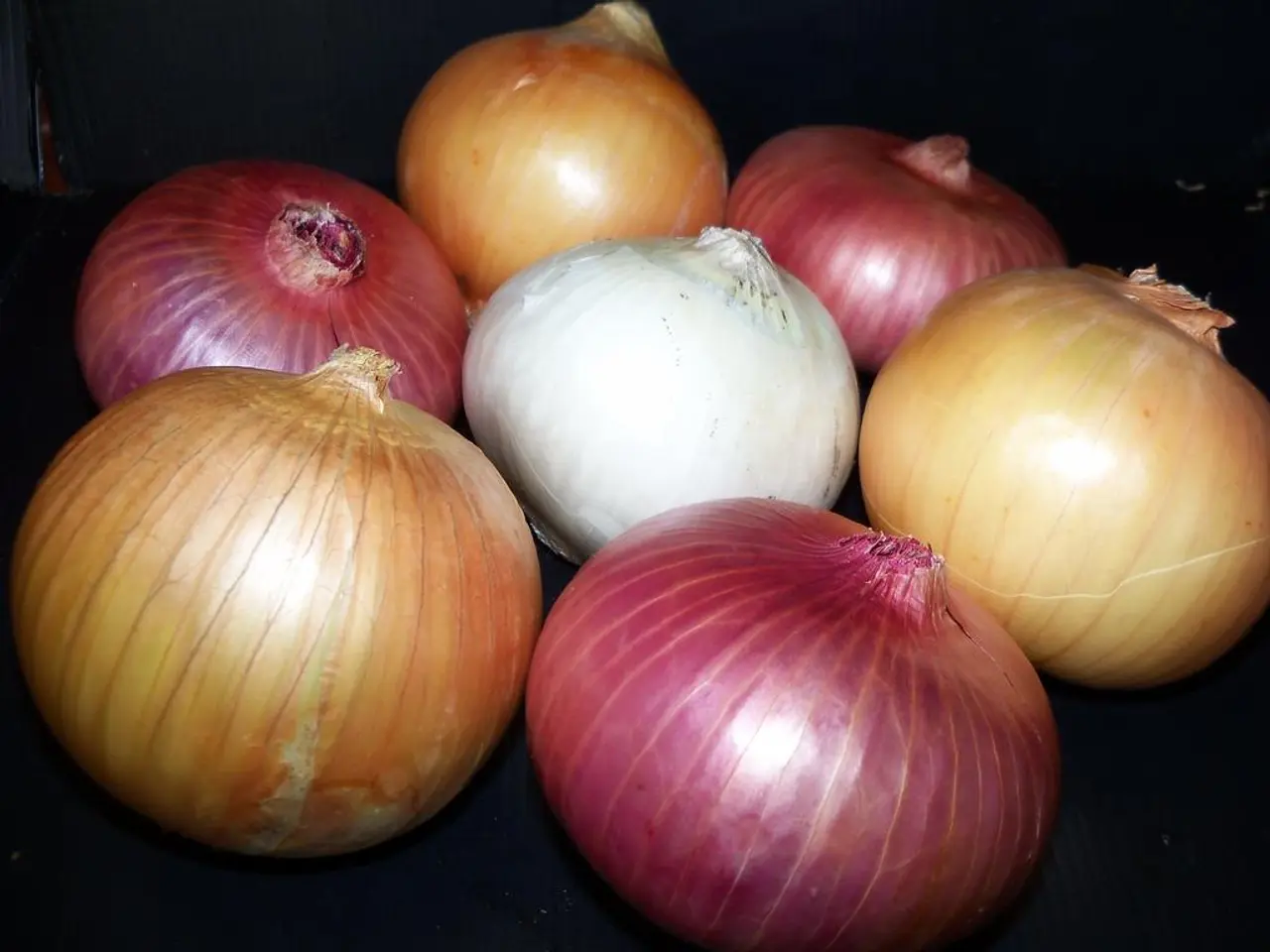Starting garlic cultivation might seem premature, but it's in fact the ideal time. Discover the steps to grow garlic here.
Garlic, a staple in many kitchens worldwide, can now be grown in your own backyard or even in pots, providing you with a bountiful supply of fresh, flavorful bulbs. Here's a step-by-step guide to help you grow garlic successfully.
Soil Requirements
To grow garlic, opt for rich, well-drained, loamy soil with a neutral pH (6.0-7.0). Avoid heavy clay, very sandy, or poorly draining soils, as these can impair garlic growth. Amend your soil with generous compost (e.g., 30L per 25-30 square feet) to improve its texture, nutrients, and drainage. Garlic is a heavy feeder, so add a slow-release organic fertilizer (about 1 tablespoon per planting hole) to provide essential nutrients for strong roots and bulb development.
Planting Methods
Separate garlic cloves, keeping the papery skins intact. Plant cloves upright, with the pointed end up, about 4-6 inches apart and 2 inches deep in the soil. The planting timing varies:
- Hardneck garlic (e.g., purple stripe varieties) prefers cold winters, so plant in fall or early winter. It needs full sun (6-8+ hours daily) and benefits from cold exposure to trigger scape production.
- Softneck garlic prefers milder winters, does best with moisture-retentive but well-draining soil, and is often planted in late fall or early spring depending on climate.
Watering
Keep garlic moist but not waterlogged throughout the growing season. Overwatering can cause bulb rot, while drought stresses the plant. Maintain consistent watering especially during root development and bulb formation phases. Mulching helps retain moisture and suppress weeds which compete for nutrients.
Maintenance and Care
For hardneck garlic, remove garlic scapes (flower stalks) when they appear to direct energy into bulb growth and enhance flavor. Weed regularly and mulch to maintain soil health and reduce competition. Monitor for pests and diseases even though garlic is generally pest-resistant.
Harvesting and Storage
Harvest garlic when lower leaves begin to brown but upper leaves are still green. Cure garlic bulbs in a shaded, well-ventilated area for 2-3 weeks to dry and enhance flavor and storage life. Softneck garlic generally stores longer than hardneck, making it ideal for long-term pantry storage.
For container-grown garlic, use deep pots (~8-10 inches) with good drainage and potting mix blended with compost and perlite. Protect from freezing in winter by insulating pots or moving indoors.
Summary Table: Hardneck vs Softneck Garlic
| Aspect | Hardneck Garlic | Softneck Garlic | |-----------------|---------------------------------|----------------------------------| | Climate Needs | Cold winters, vernalization | Milder winters, less cold needed | | Soil Preference | Well-drained, rich soil; full sun| Moist but well-draining soil | | Planting Time | Fall/early winter | Late fall/early spring | | Maintenance | Remove scapes; cold exposure | Consistent moisture; protect from freezing | | Flavor | Pungent, intense | Milder | | Storage Life | Shorter | Longer |
These practices cater to various garlic types and growing conditions, helping ensure a robust, flavorful harvest at home.
With these best practices, you can grow a variety of garlic cultivars, from the fiery 'Red Duke' to the crisp 'Iberian Wight', providing you with a bountiful supply of fresh, flavorful garlic throughout the year. Happy gardening!
- To grow garlic successfully, prepare rich, well-drained, loamy soil with a neutral pH, using compost and organic fertilizer for optimal growth.
- When planting garlic, separate cloves and plant them 4-6 inches apart and 2 inches deep, either in fall or early winter for hardneck garlic or late fall or early spring for softneck garlic.
- Maintain consistent watering throughout the growing season, keep garlic moist but avoid overwatering to prevent bulb rot, and mulch to retain moisture and suppress weeds.
- For proper garlic growth, monitor for pests and diseases, remove garlic scapes from hardneck garlic to direct energy into bulb growth, and ensure containers have good drainage for container-grown garlic.
- Harvest garlic when the lower leaves begin to brown and cure the bulbs for 2-3 weeks in a well-ventilated area before storing for longer shelf life; softneck garlic tends to store longer than hardneck garlic.





